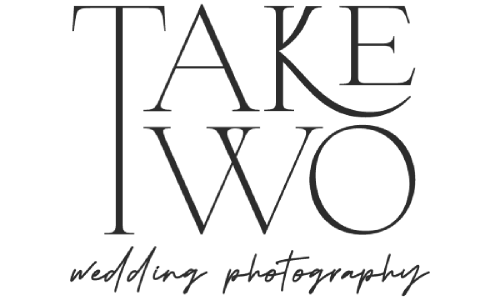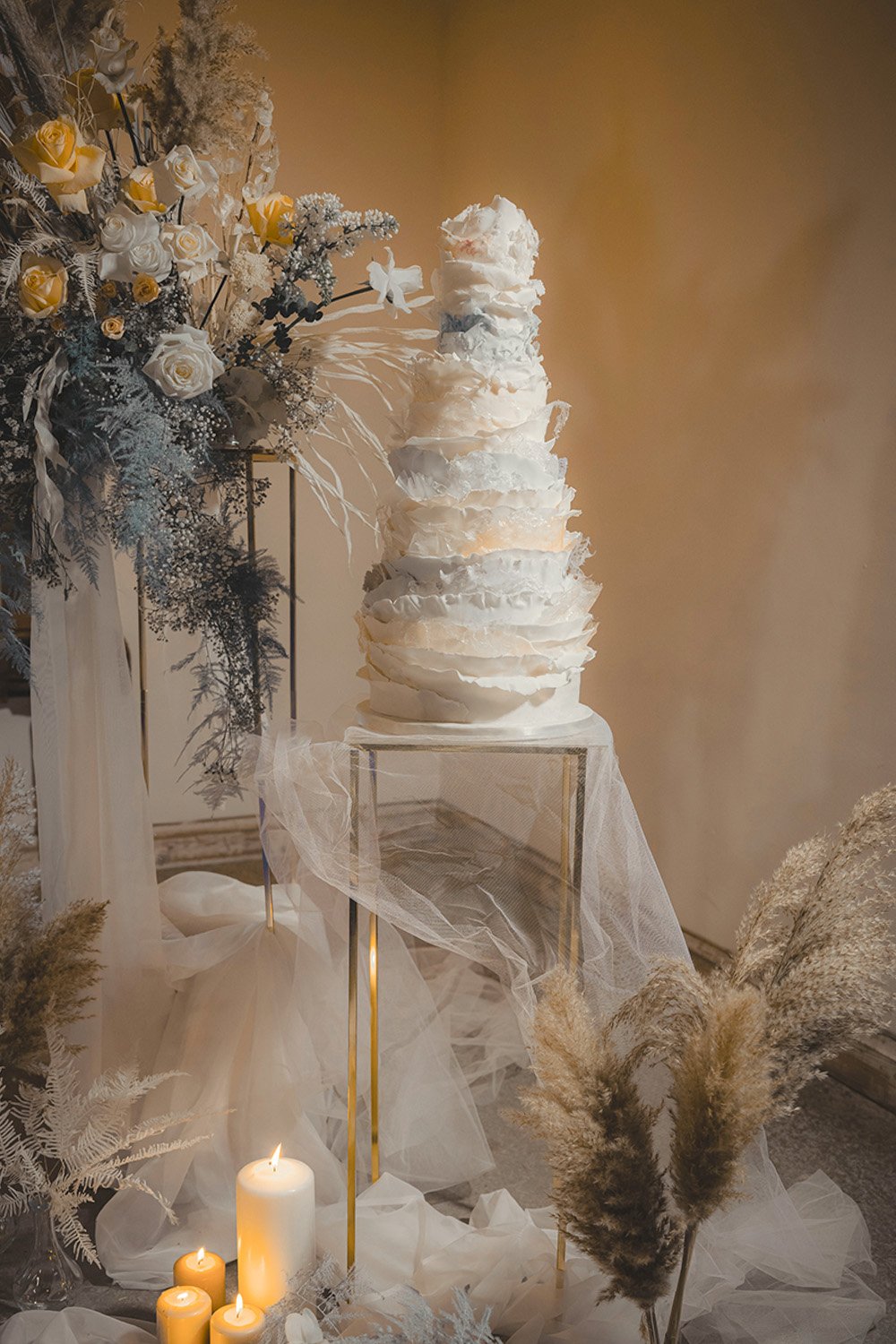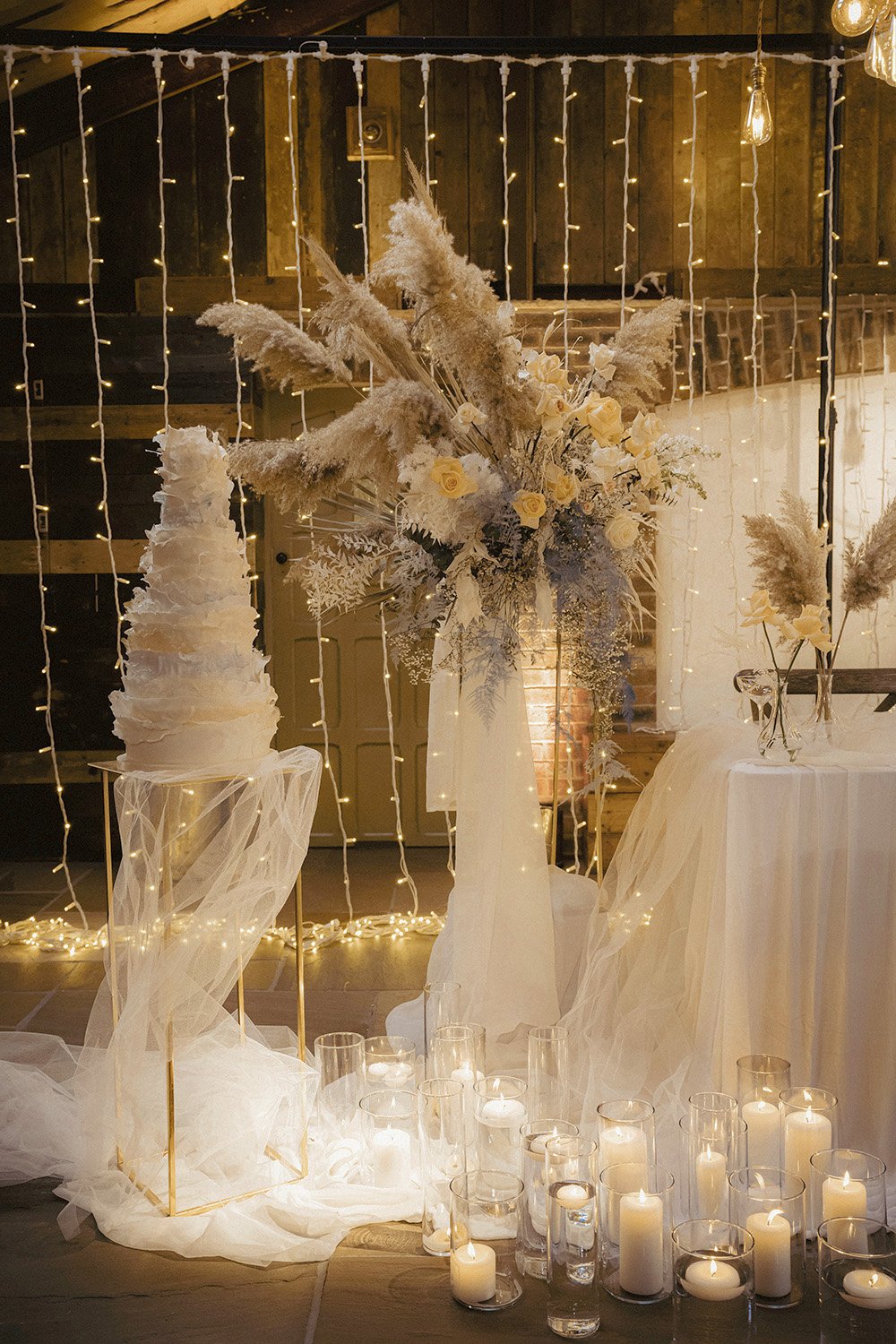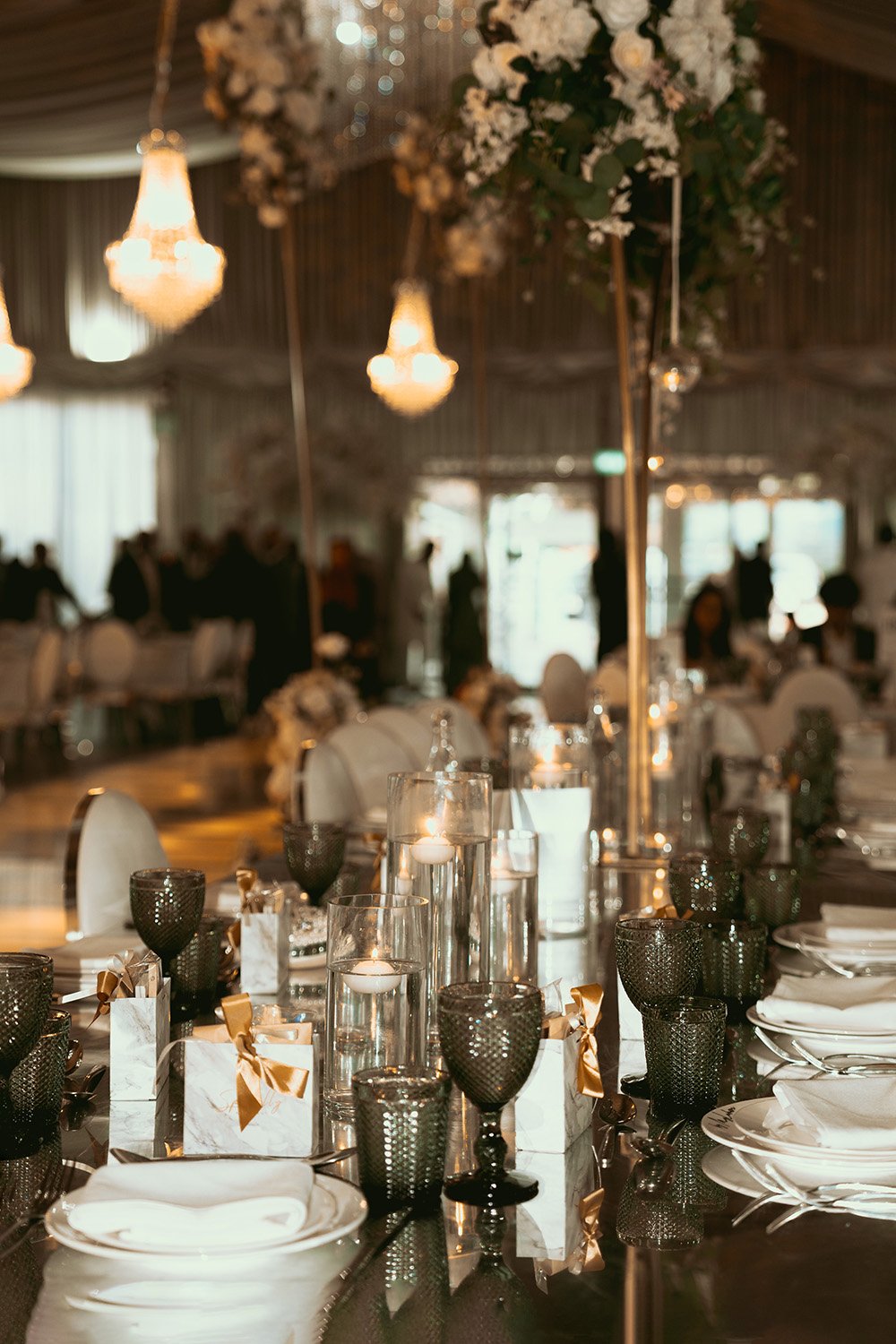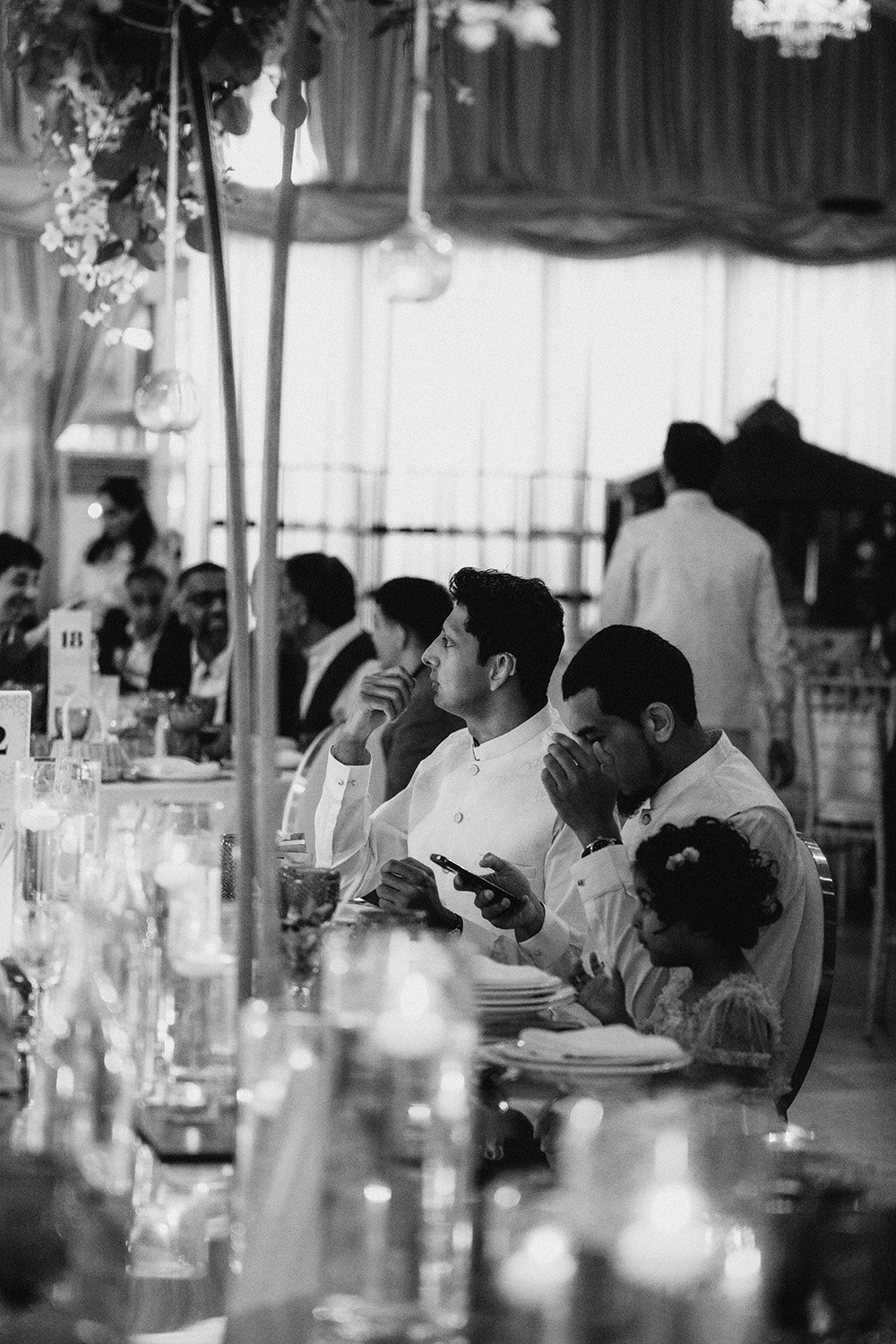Outdoor vs. Indoor Wedding Photography Styles
Understanding the Key Differences and Making the Right Choice for Your Wedding
When it comes to wedding photography, one of the critical decisions couples face is choosing between outdoor and indoor styles. Each style offers unique advantages and challenges, and selecting the right one largely depends on your vision for the big day. In this comprehensive guide, we'll delve into the world of wedding photography styles, helping you understand the nuances of outdoor and indoor settings, and ultimately assisting you in making an informed choice.
Outdoor vs. Indoor Wedding Photography Styles
Table of Contents
Introduction
Understanding Wedding Photography Styles
The Significance of Venue Selection
Outdoor Wedding Photography
Indoor Wedding Photography
Matching Photography Style with Venue
Expert Tips for Capturing Great Shots
Case Studies
Conclusion
Additional Resources and References
1. Introduction
Your wedding day is a momentous occasion, filled with love, joy, and unforgettable memories. As you plan your special day, one crucial aspect to consider is how you want those moments to be captured. Wedding photography styles play a pivotal role in preserving your cherished memories, and choosing between outdoor and indoor settings can significantly impact the outcome.
In this guide, we will explore the differences between outdoor and indoor wedding photography, helping you make an informed decision based on your preferences, the venue, and the overall ambiance you desire. Whether you dream of a sun-soaked outdoor ceremony or an elegant indoor soirée, understanding these photography styles will help you create picture-perfect memories.
2. Understanding Wedding Photography Styles
Before we dive into the specifics of outdoor and indoor wedding photography, it's essential to grasp the fundamental styles that photographers employ to capture your special day. These styles set the tone for your wedding album and define how your moments will be documented.
Documentary Style
Documentary wedding photography is all about candid moments and capturing the day's events as they unfold naturally. This style focuses on storytelling, with the photographer blending into the background to capture genuine emotions and interactions.
Editorial Style
Editorial wedding photography is characterized by its artistic and fashion-forward approach. Photographers using this style often create visually stunning, magazine-like images, combining posed shots with dramatic lighting and unique angles.
Candid Style
Candid wedding photography is a subset of documentary style, emphasizing unposed and spontaneous shots. Photographers using this style aim to capture raw emotions and authentic moments, often resulting in heartfelt and unscripted images.
Understanding these styles will help you communicate your preferences to your photographer and ensure that your wedding album reflects your vision for the day.
3. The Significance of Venue Selection
When deciding between outdoor and indoor wedding photography, your choice of venue plays a pivotal role. The venue sets the stage for your entire wedding, dictating the mood, ambiance, and even the lighting conditions. Here's why venue selection is so crucial:
Setting the Mood
The venue's aesthetics and surroundings contribute significantly to the mood of your wedding photos. An outdoor garden venue will offer a different atmosphere than a grand indoor ballroom, and your choice should align with the desired ambiance.
Considering Lighting
Lighting is a critical factor in photography. Outdoor settings provide natural light, which can be both flattering and challenging, depending on the time of day and weather. Indoor venues offer controlled lighting conditions but may require artificial lighting setups.
Weather and Contingency Plans
Outdoor weddings are susceptible to weather conditions, which can impact your photography. It's essential to have a backup plan in case of rain or extreme heat. Indoor venues provide shelter from the elements, offering peace of mind.
The choice between outdoor and indoor photography should be harmonious with your venue selection. Next, we'll explore the advantages and challenges of each style.
Outdoor vs. Indoor Wedding Photography Styles
4. Outdoor Wedding Photography
Outdoor weddings have a timeless appeal, offering a beautiful backdrop of nature's wonders. Whether you're exchanging vows in a lush garden, on a pristine beach, or in the midst of a scenic forest, outdoor wedding photography can create enchanting and breathtaking images. Here, we'll explore the unique characteristics and considerations of outdoor wedding photography.
Advantages of Outdoor Wedding Photography
Natural Beauty
One of the most significant advantages of outdoor weddings is the natural beauty that surrounds you. Mother Nature provides a stunning canvas for your wedding photos, from vibrant floral arrangements to majestic landscapes.
Abundant Natural Light
Outdoor settings offer ample natural light, which can result in soft, flattering, and well-lit photos. The sun's gentle glow during the golden hour (the hour before sunset) can create a magical ambiance.
Versatility
Outdoor venues come in various forms, allowing you to choose a location that aligns with your vision. Whether it's a rustic barn, a picturesque vineyard, or a seaside cliff, outdoor settings offer versatility in creating the wedding atmosphere you desire.
Challenges of Outdoor Wedding Photography
Weather Variables
One of the most significant challenges of outdoor photography is weather unpredictability. Rain, wind, or extreme temperatures can impact your wedding day. It's essential to have a backup plan and work with a photographer experienced in handling various conditions.
Lighting Management
While natural light is abundant, it can also be unpredictable. Harsh midday sun can create harsh shadows, while overcast skies can result in flat lighting. A skilled photographer will know how to adapt to different lighting situations.
Timing Constraints
Outdoor weddings often rely on natural light, which means that ceremonies and photoshoots may need to be scheduled around specific times of day to achieve the desired lighting conditions. This requires careful planning.
Venue Spotlight: [Venue Name]
Location: [Location Postcode] Venue Description: [Brief Description of the Venue]
[Venue Name] offers a picturesque outdoor setting, nestled in [Location]. With its lush gardens and charming architecture, it provides an idyllic backdrop for outdoor weddings. The venue's [specific features] add to its allure, making it a favorite among couples seeking a romantic and natural ambiance for their special day.
Outdoor vs. Indoor Wedding Photography Styles
5. Indoor Wedding Photography
Indoor weddings offer a different charm, characterized by elegant settings and controlled environments. In this section, we'll delve into the world of indoor wedding photography, exploring its distinct advantages and challenges.
Advantages of Indoor Wedding Photography
Controlled Environment
Indoor venues provide a controlled environment, allowing you to predict and manage factors like lighting, temperature, and weather. This control can lead to consistent and reliable photo results.
Versatility in Decor
Indoor spaces often serve as blank canvases that you can decorate to match your wedding theme perfectly. This versatility allows for creative and personalized wedding photography.
Reduced Weather Worries
With indoor weddings, you eliminate concerns about unpredictable weather conditions. You won't need to worry about rain, wind, or extreme temperatures affecting your wedding day.
Challenges of Indoor Wedding Photography
Lighting Variability
Indoor lighting can vary significantly depending on the venue. Some spaces may have ample natural light, while others may require artificial lighting. Photographers must adapt to these conditions to achieve the desired results.
Space Limitations
Indoor venues may have limited space, making it challenging to capture group shots or create certain artistic compositions. Photographers must work within the available space creatively.
Reflections and Shadows
Indoor environments can introduce reflections and shadows, especially in venues with large windows or mirrors. Managing these elements requires skill and expertise to avoid distractions in your photos.
Venue Spotlight: [Venue Name]
Location: [Location Postcode] Venue Description: [Brief Description of the Venue]
[Venue Name] is a stunning indoor venue located in [Location]. Its grand ballroom, adorned with crystal chandeliers and elegant decor, exudes timeless sophistication. The venue's [specific features] provide an enchanting backdrop for indoor weddings, making it a top choice for couples seeking an elegant and luxurious atmosphere.
[Include a photo or two of the venue]
6. Aligning Photography Style with Your Venue
Selecting the perfect wedding photography style should harmonize with the distinctive ambiance of your chosen venue. Here's how to ensure a seamless match:
Choosing the Right Style for Your Venue
Your wedding venue sets the stage for your special day. Whether it's a romantic beachfront, a rustic barn, a grand ballroom, or an intimate garden, each venue has its own unique character. To capture the essence of your wedding venue, it's essential to choose a photography style that complements it.
1. Classic and Timeless Venues: If your wedding will take place in a historic mansion or a traditional church, a classic and timeless photography style, such as traditional or fine art, can beautifully preserve the elegance and sophistication of these venues.
2. Contemporary Urban Settings: Modern venues like urban lofts or rooftop gardens pair well with a contemporary and artistic photography style. The juxtaposition of modern architecture and creative photography can result in captivating images.
3. Natural Outdoor Locations: For weddings in natural settings like gardens, beaches, or forests, a photojournalistic or naturalistic style is ideal. These styles emphasize candid moments and the beauty of nature.
4. Rustic and Vintage Venues: If you've chosen a rustic barn or a vintage-themed venue, consider a photography style that embraces the charm of imperfections. Fine art or documentary styles can accentuate the rustic allure.
Communication with Your Photographer
Once you've identified the photography style that aligns with your venue, it's crucial to communicate your preferences with your photographer. Schedule a consultation to discuss your vision, and provide details about the venue's unique features and the atmosphere you want to create.
Ask your photographer for their input and ideas. Experienced photographers often have valuable insights into how to make the most of your chosen style in different settings.
Outdoor vs. Indoor Wedding Photography Styles
7. Pro Tips for Capturing Stunning Moments
Unlock the secrets to capturing exceptional wedding photos with these expert tips:
7.1. Embrace Natural Light
One of the most valuable assets for any wedding photographer is natural light. It creates a soft, flattering glow that enhances the beauty of your subjects. Here are some tips for making the most of natural light:
Golden Hour Magic: Schedule outdoor photo sessions during the golden hour, which occurs shortly after sunrise and before sunset. The warm, diffused light at these times adds a touch of magic to your photos.
Diffusion Panels: If you're shooting in direct sunlight, consider using diffusion panels or reflectors to soften harsh shadows and create a more even illumination.
Indoor Venues: In indoor venues, position subjects near windows to capitalize on natural light. It can provide a lovely, soft illumination for portraits.
7.2. Capture Candid Moments
Candid shots often reveal the most genuine and emotional moments of a wedding. Here's how to capture those unscripted gems:
Stay Unobtrusive: Blend into the background as much as possible. The more comfortable your subjects feel, the more authentic their expressions will be.
Continuous Shooting Mode: Use your camera's continuous shooting mode to capture a series of shots in rapid succession. This increases the chances of catching candid moments.
Anticipate Emotions: Pay close attention to the dynamics between people. Be ready to capture reactions during key moments, such as the exchange of vows or the first dance.
7.3. Master Composition
Composition is the art of arranging elements within your frame to create visually appealing images. Here are some composition tips:
Rule of Thirds: Divide your frame into thirds horizontally and vertically. Position key elements along these lines or at their intersections for balanced compositions.
Leading Lines: Use natural lines, like pathways or architectural features, to guide the viewer's eye towards the main subject.
Foreground Interest: Include foreground elements to add depth and context to your photos. This technique can make your images more engaging.
7.4. Plan for Detail Shots
Weddings are full of intricate details, from the rings and flowers to the place settings and decor. Don't forget to capture these elements:
Macro Lens: Invest in a macro lens to capture stunning close-up shots of details like the wedding rings, intricate lace on the dress, or the texture of the bouquet.
Storytelling: Use detail shots to tell a narrative. For example, photograph the bride's hands as she adjusts her veil or the groom's hands as he nervously holds his vows.
7.5. Be Prepared for Challenges
Wedding photography often presents unexpected challenges. Be prepared to adapt and overcome:
Weather Contingency: Have a backup plan in case of inclement weather. This could involve securing an indoor location for photos or providing umbrellas for the bridal party.
Low-Light Situations: Invest in high-quality lenses and a camera body with good low-light performance to handle dimly lit venues.
Group Dynamics: Group photos can be chaotic. Appoint a family member or wedding planner to assist in organizing and gathering groups efficiently.
7.6. Develop a Shot List
Create a shot list that outlines the must-have photos for your wedding. This ensures that no essential moments are missed. Some key shots to include are:
Bride and Groom Portraits: Plan time for intimate portraits of the bride and groom in various settings.
Family and Bridal Party: Group shots with family members and the bridal party are traditional and meaningful.
Ceremony and Reception: Capture key moments during the ceremony and reception, such as the exchange of vows, the first kiss, and the cutting of the cake.
Candid Moments: Include candid shots of guests enjoying themselves. These images can be full of joy and emotion.
By following these pro tips, you can enhance your wedding photography skills and capture stunning moments that will be cherished forever.
8. Real-Life Examples
Explore real case studies that showcase how different photography styles can elevate your wedding memories:
8.1. The Romantic Fine Art Wedding
Venue: A historic castle surrounded by lush gardens.
Photography Style: Fine Art
In this case, the couple chose a venue with a timeless and romantic atmosphere—a historic castle with stunning gardens. The fine art photography style was the perfect choice to capture the elegance of the location. The photographer focused on creating soft, dreamy images that resembled works of art. The result was a collection of photos that exuded romance and sophistication. From intimate portraits in the garden to candid moments inside the castle, the fine art style beautifully complemented the venue's ambiance.
8.2. The Urban Chic Celebration
Venue: A modern, urban loft with industrial aesthetics.
Photography Style: Contemporary
For this wedding held in a sleek urban loft with exposed brick walls and industrial details, contemporary photography was the ideal choice. The photographer embraced the venue's urban chic vibe by using creative angles and lighting techniques. The resulting photos had a modern and artistic flair, perfectly reflecting the venue's character. From the couple's stylish portraits against cityscape backdrops to candid shots of guests dancing under industrial chandeliers, the contemporary style captured the essence of the venue.
8.3. The Rustic Barn Affair
Venue: A charming barn nestled in a scenic countryside setting.
Photography Style: Documentary
In a rustic barn surrounded by rolling hills and scenic countryside, the documentary photography style shone. This style focuses on capturing candid moments and real emotions. The photographer seamlessly blended into the background, allowing genuine moments to unfold naturally. From the heartfelt vows exchanged in the barn to guests enjoying the outdoor reception, the documentary approach preserved the rustic charm and authenticity of the venue. Every image told a genuine and heartfelt story of the day.
8.4. The Garden Elegance
Venue: A botanical garden filled with lush greenery and vibrant blooms.
Photography Style: Naturalistic
In the midst of a botanical garden bursting with vibrant colors and lush greenery, the naturalistic photography style thrived. This style emphasizes the beauty of nature and unposed moments. The photographer used the garden's natural beauty as a backdrop for portraits and candid shots alike. From the couple's serene moments among blooming flowers to candid laughter shared with guests, the naturalistic style perfectly captured the venue's allure. The resulting photos were filled with the vibrancy and serenity of the garden.
8.5. The Vintage Garden Party
Venue: An outdoor garden venue with a vintage theme.
Photography Style: Fine Art Documentary
This unique wedding took place in an outdoor garden venue with a vintage theme. To do justice to this charming setting, the photographer combined elements of fine art and documentary styles. The fine art aspect added a touch of elegance to the images, while the documentary approach captured candid moments and emotions. From vintage-inspired couple portraits to candid shots of guests enjoying a garden party, this blend of styles perfectly reflected the venue's charm and created a nostalgic atmosphere.
9. Conclusion
As we conclude our exploration of wedding photography styles, here's a summary of the key takeaways:
9.1. Your Venue Sets the Tone
Your wedding venue plays a pivotal role in setting the tone and ambiance of your special day. Whether you choose an elegant castle, a rustic barn, a modern loft, a botanical garden, or any other unique location, the photography style should align with the venue's character.
9.2. Choosing the Right Style Matters
Selecting the right photography style is crucial to ensure that your wedding memories are captured in a way that resonates with your vision. Each style, whether it's fine art, contemporary, documentary, or naturalistic, brings its own charm and approach to photography.
9.3. Blend Styles for Unique Results
Sometimes, a blend of photography styles can offer a truly unique and personalized approach to capturing your wedding day. Don't be afraid to combine elements of different styles to match the distinctiveness of your venue and your personal preferences.
9.4. Communication with Your Photographer
Open and clear communication with your wedding photographer is key to achieving the desired results. Discuss your venue, style preferences, and specific shots you want to capture. A talented photographer will work with you to make your vision come to life.
9.5. Relive Your Wedding Through Photos
In the years to come, your wedding photos will be a cherished way to relive your special day. Choose a photography style that resonates with you and reflects the unique beauty of your venue. Your wedding album will be a work of art, filled with picture-perfect memories.
9.6. Additional Resources
For further insights and inspiration on wedding photography styles, don't hesitate to explore the additional resources and references provided in Section 10.
Outdoor vs. Indoor Wedding Photography Styles
10. Additional Resources and References
For further reading and insights into wedding photography, here are additional resources and references to help you on your photographic journey:
10.1. Books for Photography Enthusiasts
If you're passionate about photography and want to delve deeper into the art of capturing stunning images, consider these recommended books:
"Understanding Exposure" by Bryan Peterson
"The Photographer's Eye" by Michael Freeman
"On Photography" by Susan Sontag
"The Wedding Photographer's Planner" by Kenny Kim
"Wedding Photography: A Step by Step Guide to Capturing the Big Day" by Rick Ferro
10.2. Online Photography Communities
Joining online photography communities can be an excellent way to connect with fellow photographers, seek advice, and showcase your work. Here are some popular platforms:
DPReview: A community-driven platform for digital photography enthusiasts.
Photography Stack Exchange: A Q&A platform where you can ask and answer photography-related questions.
500px: A photography social network and marketplace for photographers to share and sell their work.
10.3. Wedding Photography Blogs
Stay updated with the latest trends, tips, and inspiration from the world of wedding photography by following these blogs:
10.4. Photography Workshops and Courses
Consider enrolling in photography workshops and courses to enhance your skills and knowledge. Many renowned photographers offer online and in-person workshops that cover various aspects of photography.
10.5. Wedding Photography Associations
Joining a photography association can provide networking opportunities and access to resources. Some notable associations include:
10.6. Wedding Venue Directories
When searching for the perfect wedding venue, utilize wedding venue directories and websites to discover unique locations:
10.7. Photography Gear and Equipment
If you're interested in upgrading your photography gear or exploring new equipment, check out reputable photography stores and websites:
DPReview Gear Guides
10.8. Local Wedding Photographers
Connect with local wedding photographers to gain insights into the wedding photography scene in your area. They can provide valuable recommendations and advice based on their experience.
10.9. Educational YouTube Channels
YouTube is a treasure trove of photography tutorials and reviews. Explore channels like Fstoppers and Tony & Chelsea Northrup.
10.10. Photography Software and Editing Tools
For post-processing and editing, consider software like Adobe Lightroom and Photoshop. These tools can help enhance your wedding photos and create stunning visual effects.
We'd love to chat with you about capturing the beautiful moments of your wedding! Swing by our website at Take Two Wedding Photography to peek at our portfolio and see the magic we can create together. If you're curious about our services or just want to talk about your big day, Give us a shout – we're here to help make your memories last forever! We're all about making your wedding journey as joyful and stress-free as possible!
